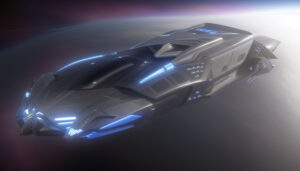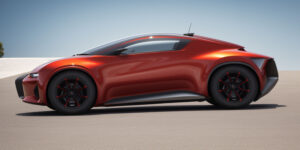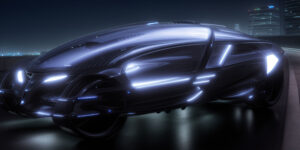Porsche Panamera Sport Turismo Concept
httpvh://www.youtube.com/watch?v=G94E3LY-4a8
The body concept of the Panamera Sport Turismo is an outlook on a possible Porsche sports car of tomorrow: The overhangs are short, and the boot lid is large — both sporty and functional. The concept car combines the dimensions of a premium vehicle with the interior comfort of the luxury class. The Sport Turismo is 1,990 mm wide, a low 1,401 mm in height and 4,950 mm long. Its direction indicators and sidelights are integrated in C-shaped lighting units — known as C-Blades — mounted in the large air inlets at the front end. Together with four-point LED headlights in an innovative design, they define the front end appearance of the concept car.
The drive technology of the Panamera Sport Turismo completes the next development step towards the plug-in hybrid, symbolised by the “e-hybrid” badge on the front wings. The car’s new ability to be charged from the electrical power grid has been combined with even higher performance components. The concept vehicle with its 416 hp (306 kW) of peak system power is designed to be driven in pure electric mode up to a speed of 130 km/h and can cover distances of over 30 km. The Sport Turismo also exhibits impressive fuel economy per the NEDC standard; its combined fuel consumption is less than 3.5 litres per 100 km, while CO2 emissions are under 82 g/km.
The drive system of the Panamera Sport Turismo is an advanced development of the parallel full hybrid that Porsche already implements today in the Panamera S Hybrid and Cayenne S Hybrid. The new electric motor produces about 70 kW (95 hp), which is around twice as much as in today’s Porsche hybrid drive, while the three-litre V6 supercharged engine still produces 245 kW (333 hp) here. In their interplay, they accelerate the concept car from zero to 100 km/h in less than six seconds.
The electric power pack of the Sport Turismo e-hybrid consists of a lithium-ion battery whose performance is several times that of the nickel-hydride battery currently used in production, although it has practically the same dimensions. Its 9.4 Kilowatt-hours of energy storage capacity and high peak power enable faster acceleration, longer electric driving range and higher speeds when driving without the internal combustion engine.As a plug-in hybrid, the fluid-cooled lithium-ion battery is not only charged while driving; it can also be externally charged within 2.5 hours (depending on the power supply) via a charging interface on the vehicle. Porsche systematically thought through all aspects of the concept car’s plug-in system; it utilises a universal charger (AC) that is wall-mounted in a home garage and has a standardised charging plug.
The interior of the Sport Turismo is a forward-looking interpretation of purist sports car thinking: as little as possible and as much as necessary. Instead of classic instruments, a large central TFT colour display is positioned in front of the driver; it is used to call up and display any vehicle information as needed — from the tachometer to driving data or navigation. Two monitors, one to the left and one to the right of this display, show images from the “exterior mirror” cameras. Two additional displays in tube form provide informa- tion on the hybrid-specific driving states, e.g. pure electric driving, as well as other functions.





